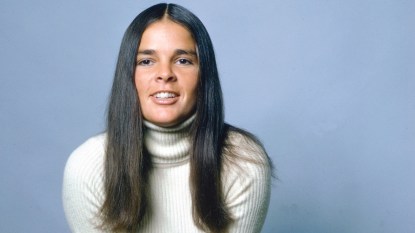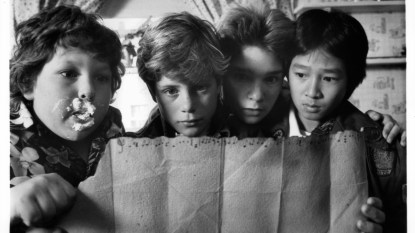New Study Finds That Mixed Emotions, Like Those in Disney’s ‘Inside Out 2,’ Are Very Real
Not all feelings are exclusively good or bad!

Disney and Pixar’s Inside Out franchise resonates with people of all ages, and for good reason. The latest addition to the series, Inside Out 2, was released on June 14. Much like its predecessor, being a colorful animation didn’t stop this film from being celebrated by critics and audiences from adolescence to adulthood thanks to the emotional depth personified on screen. Now, there’s scientific research to support the reason behind how well-received these films — especially the more nuanced sequel — have been. Keep scrolling to learn more about the new study that validates mixed emotional responses.
Related: The 7 Best Movies on Disney+ Right Now — Perfect for a Relaxing Night In!
New study proves ‘Inside Out 2’ is an accurate portrayal of complex emotions
Inside Out follows emotions operating a control center in the brain of a young girl named Riley. These emotions include joy, sadness, anger, fear and disgust, which are each their own characters and personalities. In the second film, Riley is now 13, and the original emotions are joined by a slew of new, more complex emotions: anxiety, ennui, envy and embarrassment. Some chaos ensues along with the processing of these mixed emotions, and researchers from USC Dornsife have presented proof that similar reactions take place in the brain in real life.
The study, published in Cerebral Cortex, defined mixed emotions as the simultaneous presence of feelings with positive and negative capacity. Researchers used functional magnetic resonance imaging (fMRI) to scan 27 participants watching an Academy Award nominated animated short film titled One Small Step as a means to intentionally induce bittersweet mixed feelings. Those subjects then watched the film again without MRI and noted when they experienced positive, negative and mixed feelings, and findings suggested that there are plenty of emotions in which positive and negative feelings overlap.
The main question was whether individual, objectively good or bad emotions are simply fighting for control and fluctuating at all times in our brains creating the perception of mixed feelings, or if there are truly unique emotions in which positivity and negativity coexist. The scientists came to the conclusion that mixed emotions are more than figments of our imaginations. Being excited and nervous or joyful and sad at the same, for example, are their own emotions. Brain areas called the amygdala and nucleus accumbens, which are typically involved in emotional processing, were activated by distinctive neural activity when a study participant experienced mixed emotions.
“Not only did we find brain activity that was correlated with mixed emotions, but we found that it held steady over time,” says Anthony Vaccaro, lead author of the study and a postdoctoral researcher at the Neuroendocrinology of Social Ties Lab at USC Dornsife. “You’re not ping-ponging between negative and positive. It’s a very unique, mixed emotion over a long period.”
Why does research about mixed emotions matter?

We’ve all felt mixed emotions. Maybe you’ve used the term “love-hate relationship” to describe something that has both pros and cons, or you’ve felt disappointment and a sense of relief at the same time when you found out your plans were canceled. These are just a few out of an entire spectrum and endless combinations of mixed emotions, but now science tells us that something special happens in our brains when we feel these things beyond the common belief that our minds just bounce directly between good and bad.
“What excited me about this research, it’s relevant for our mental health,” says Jonas Kaplan, associate professor (research) of psychology and co-author of the study. “And there’s a certain sophistication that’s required to kind of sit with a mixed emotion, exploring what are the benefits of being able to accept positive and negativity at the same time within yourself, is something we think is worth studying.”
The next goal moving forward is to study how the brain processes emotional reactions in a group setting, including a group of people watching a movie in a theater together. Watch the video of these researchers discussing their study here!
Want more entertainment news?
Inside Valerie Bertinelli’s New Relationship: See Her Vulnerable Instagram Post and Healing Journey













